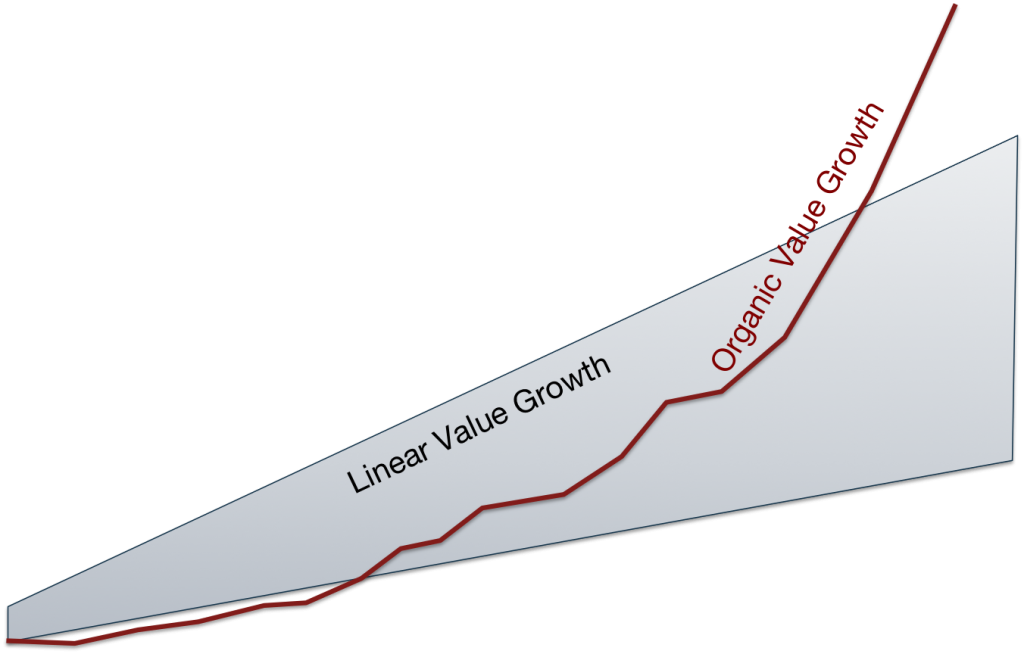Note: This guest post is sponsored content from Common Room. Learn more here.
As community leaders dive into 2023, we want to offer them ideas for showcasing the impact their work has on the business. Aligning on the right metrics with stakeholders is a great place to begin. If you’re not sure where you and your stakeholders’ goals and community vision intersect, use this free 5-question self-guided alignment assessment.
Connecting community growth to business goals
Business-wise, the value of a thriving community comes from strategically applying community initiatives to business goals. At its core, community-led growth is about finding creative ways to use community channels to empower product users with deeper knowledge, support customer acquisition, increase retention, create opportunities for upsells, and more.
When executed well, community-led growth boosts nearly every department across the organization:
- Support and success teams can meet users where they are to address bugs and issues in customer experiences.
- Marketing teams can create messaging and content that’s specifically tailored to the community’s needs.
- Sales departments can identify prospects with high intent and bring increased context and value to sales calls.
- Product and engineering teams can get direct product feedback and learn what features users want next.
Success can be difficult to prove to stakeholders across an organization when it’s not measured—this is why metrics are so important to community-led growth efforts.
What metrics can tell us about community health and growth
Community growth is a long-term investment with compound interest. To make more strategic choices, what data do you need?
There are four main categories of metrics that community leaders should consider:
- Membership
- Engagement
- Responsiveness
- Business impact
Membership
Membership metrics provide insight into the makeup of your community and help you quantify your reach.
Useful metrics in this category are:
- Member headcount is a staple of community growth metrics because more people means more perspectives, knowledge, and reach.
- Understanding members’ role types is important, as teams may need to engage differently with prospects, current customers, and influencers.
Measuring membership metrics over time gives you insight into the overall growth of your community, and getting to know your members more deeply offers insights into topics they’re most interested in, commonly shared pain points, and how to provide the most value.
Engagement
Engagement metrics indicate whether or not members and prospects get value from participating.
Useful metrics in this category are:
- The total number of posts across channels.
- The ratio of observers to active participants can give insight into how welcome, interested, and empowered members feel.
- The percentage of members who qualify as product champions can indicate how likely it is that your most satisfied customers will advocate for your product.
- Understanding trending topics is key to knowing what’s hot (or not) in your community. Topics can spark content production ideas, factor into sales conversations, and inform product development.
Check your engagement metrics often. With this data, you’ll be better able to course-correct before spending resources on community initiatives that aren’t a good fit. If engagement is low, it’s an indicator of disconnect. Adrian Speyer discusses ways to re-engage a stagnant community in this live author Q&A.
Responsiveness
Responsiveness metrics help you understand how valued and supported your community members feel.
Useful metrics in this category are:
- Your response rate, or what percentage of members’ posts receive replies.
- Median response time, or how long it takes for someone to respond to a post, can greatly affect the flow of conversation.
- The ratio of community responses to team member responses is important because dynamic interactions between members (and employees!) are what makes a community.
Responsiveness metrics provide interesting insight into how your community feels. If you’re looking to boost engagement, offering quick responses to posts can create a sense of organic conversation. If you notice your team is responding the most, look for ways to encourage members to chime in.
Business impact
If you can’t tie the impact of community to overarching business goals, you won’t be able to drive your business forward through community-led growth.
Useful metrics in this category are:
- Customer acquisition gets a boost from a thriving community because it creates opportunities for prospects to engage with product advocates, and it helps them get questions/objections addressed quickly.
- Retention improves when customers have access to more information, templates, and use cases, ensuring they have everything they need to get the most value from your product.
- Account expansion is made possible when members share innovative ways to use your product, opening users’ eyes to greater value opportunities.
- Community-attributed revenue is revenue from an organization whose members engaged in the community before they appeared in your CRM or marketing automation system. Being able to share this number is one of the best ways to demonstrate the impact of community on the business.
Proving community ROI can look different from one business to the next, and it’s critical to determine which goals you’re trying to achieve in order to make informed decisions about where you should focus your efforts and how to track your progress.
Intelligent community growth platforms
Layering data-based insights across your community channels is what we call intelligent community growth. Instead of manually pulling metrics, use an intelligent community growth platform like Common Room that aggregates data from across your community channels, social sites, and CRM to provide a holistic view of the members and activity in your community and enables reporting that gives you visibility into the metrics that matter for your community and organization, allowing you to draw a straight line from your community work to the impact it has on the business. We can’t wait to see how you engage and support your community in 2023.
The full version of this post was originally published on the Common Room blog on December 8. For more insights about community metrics and benchmarks, check out our free 360: Community-Led Growth Report.

